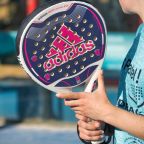
Keep your running feet on the ground in 2023
If you're preparing for a Marathon this summer, you'll no doubt have all the emotions "running" through your mind right now. And, it's not just the thought of the race itself, but the post-race recovery that might be preying on your mind too!
After the hours of training - building up mileage slowly over the weeks – your body will have become accustomed to the physical effects of pounding the pavement. However, for many people, the actual 26.2 miles on the day will be their longest, most challenging run so far.
The most obvious part of your body to bear the brunt of running is your feet – so how do you breathe life back into them after your heroic efforts? We asked CCS Foot Care Brand Ambassador and podiatrist Dina Gohil BSc (Hons) MRCPod, HCPC Reg of Mayfair Clinic, DG Podiatrist for her 5 top tips for runners to "keep a step ahead" of potential foot problems:
- Achy, tired feet
The London Marathon course is pure concrete and so it's no wonder that feet can take a battering. Stretching and practising foot exercises pre and post-race helps to develop the muscles and ligaments of the lower limb and naturally strengthens the arches of the foot and improves awareness of where we are in relation to the space around us or so called 'proprioception'.
Evidence has shown that those of us who habitually do this have denser muscles on the soles of the feet; greater agility than those who don't stretch and demonstrate a wider range of hip circumduction and more flexibility of the gluteal and hamstring muscles.
Here's a simple exercise to try; toe stretching
- Sit down and take your toes in your hands and bend them all downward to stretch the top of your foot and upward to stretch the bottom of your foot.
- Pull each toe apart to stretch between toes.
- Place the ball of one foot flat on the floor and lift the heel as high as you can.
In the first couple of days post-run, rest is obviously important. So, do take the weight off your feet (literally!) and try to get plenty of good quality sleep. Having said that, keeping moving is also important to help blood flow and muscle recovery. Light stretching can help – make sure you focus on your calves, hamstrings, glutes and quadriceps, as these are likely to be very tight. When you do stop for a well-earned "sit down", it's best to elevate the feet again to make sure the blood doesn't pool in the lower half of your body.
- Blisters
The runner's curse! Blisters are small liquid filled sacs, which are caused when the upper layer of skin tears away from the layers beneath – often as a result of trainers rubbing against sensitive parts of the feet, especially if worn over a long period of time. Look for socks made from cotton, that preferably come up just under the knee, so they provide protection for the ankle and calf. Ahead of a long run, or the marathon event itself, some runners apply plasters to minimise the risk. Also, remember that you do need to replace trainers - the general rule is to change your running shoes anywhere between 300-500miles. As the running shoe becomes worn out, the cushioning and support lessen thus impacting your midfoot, muscles and joints. Signs that they need to be replaced are; your feet start to be more tired or sore after a run than usual, feeling joint pain, getting new blisters or friction burns, loss of cushioning and you can feel more impact, the grip on the shoe has diminished, and visible tears or cracks in the running shoes.
Everyone's feet are different and the type of support, movement, heel strike, or flexibility they have or need will vary. Some people may have higher or lower arches. Some people may pronate or supinate more. It is advisable to have your feet assessed to check what your foot requires and have a gait analysis – most good running or sports stores offer this to help you find the right shoe for your needs.
Blisters should normally heal on their own within a week, but covering the blister with a plaster or dressing can help to protect the skin from further damage. A moist dressing (hydrocolloid) can help to cushion the blister to reduce pain and speed up healing. Specially designed "blister plasters" are now available to buy in the pharmacy. Hygiene is important to help prevent infection, so be careful to wash your hands before touching a burst blister. In general however, it is best not to burst a blister or peel off the skin.
- Damaged toenails (or even, no toenails!)
Many runners will wake up the day after a race or after an intensive training period with "Runner's toenail" – a black nail caused by the repeated stress and the damage this causes to blood vessels that feed the toenail. Although it's often painless, and some runners see it as a badge of honour, this nail trauma can lead to several potentially painful complications, such as blood blisters, the loss of the nail or a fungal infection. Onychomycosis is a fungal infection of your nail that can cause discoloration. It can make nails appear thick, yellow, brittle, and can hurt. Runners are particularly susceptible to infections since fungi thrive in moist environments, like sweaty socks. Personal hygiene is by far the best way to prevent fungal infections. Here's a few simple tips; change into fresh socks and shoes after training or a race, always take a shower or bath after exercise to cleanse the body, dry both feet thoroughly and air out your trainers between runs. To treat fungal infection try an over the counter treatment like Nailner 2in1.
- Hard skin or calluses
The feet act as shock absorbers and so the impact over the course of training for a Marathon can be immense. Many runners are turning in at least 20-25 miles a week - that's a lot of time on your feet! Over time, this pressure can lead to hard skin forming on the soles of the feet – which can be uncomfortable, but relatively painless, However, for some people the pressure as we walk and run means that the skin cracks, which can become deep and very painful.
To help break down this hard skin, it can help to treat your feet to warm, salt water foot bath. After, make sure you dry your feet thoroughly and pay particular attention to the skin in between your toes (to prevent problems such as athlete's foot). After a foot soak or a shower, it's important to use a good quality foot cream – ideally every day. My top tip is to look for a cream that contains urea – which helps to maintain moisture levels (by increasing the uptake of water in the epidermis) and keeps the skin hydrated. Urea also helps reduce the build-up of callus as it is a keratolytic agent i.e. it helps break down the hard skin. One of my favourites is CCS Foot Care Cream – use it daily and try it overnight, with some cotton socks over the top – for a really intensive, nourishing experience. If cracked heels are your nemesis, try CCS Cracked Heel Repair Balm which has a higher percentage of urea (25%) and lactic acid to exfoliate, hydrate and strengthen the skin – with visible results within 3 days. You can also try a foot file or pumice stone during the week gently on a dry foot and if these home treatments don't work for you, then see a podiatrist to help remove your callus safely and effectively.
- Foot cramps
Foot cramps often happen at night and can be incredibly painful. It could be a sign that you're deficient in certain nutrients such as magnesium, calcium or potassium. In terms of diet, try to make sure you're eating food naturally high in these minerals, like edamame beans, Swiss chard, salmon, avocado, diary produce such as milk, yogurt and cheese and bananas etc.
Alternatively, cramp can also occur as a result of dehydration or overworking the body (err, like running a marathon!). So, the first port of call is to keep up your fluids – stay hydrated with water throughout the day (aim for 6-8 glasses a day, just over 1 litre) and take water to bed at night to sip if you have an "attack". But when you're running "long" and feeling drained, sports drinks are ideal. They contain electrolytes and carbs that facilitate water absorption and help prevent fatigue. And, lastly, as tempting as it is to meet up with friends and family for a celebratory drink, avoid choosing an alcoholic beverage immediately after the race.










